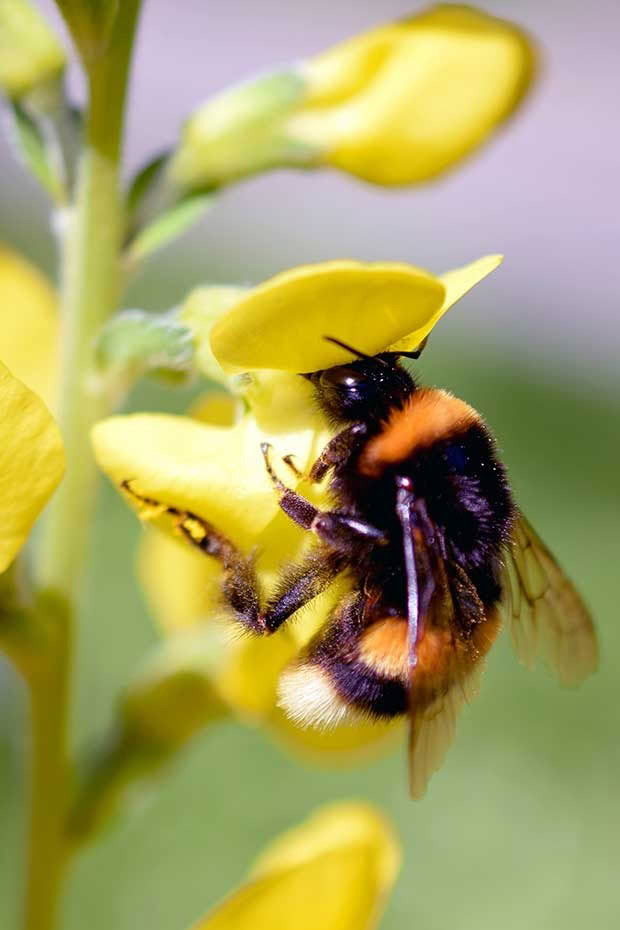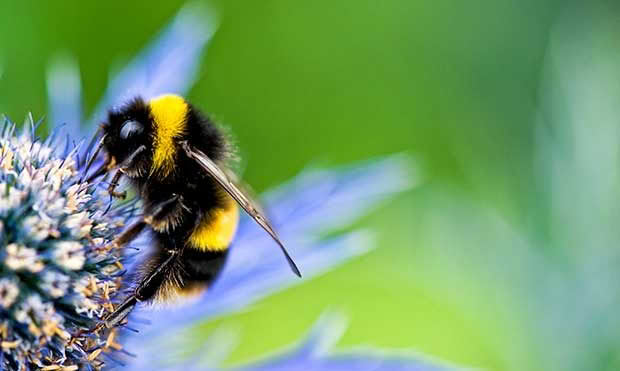Did you know bumblebees have smelly feet? Why nature’s fuzziest pollinator is starring in Rachel Weston’s new children’s book

Discovering that bumblebees live in underground burrows sent the Bay of Plenty’s Rachel Weston on a hunt for knowledge. What she discovered is revealed in her first book.
Words: Lee-Anne Duncan
Honeybees get all the attention (all the glory, in fact) because the sweets of their labour are spread on toast. Bumblebees, their fatter, furrier cousins, are usually viewed with fond – and confused – indulgence.
What, really, does a bumblebee do?
“Oh, so, so much,” says Rachel Weston, who’s been busier than – well, than a bee – collecting facts for her new book, Bumblebees Have Smelly Feet. The picture-book may be aimed at children, but Rachel is confident adults will learn more than a thing or two within its 32 pages.

For a start, bumbles can do up to 50 times the pollinating work of one honeybee. And they vibrate to increase their body temperature so they can pollinate in the light rain and cold temperatures that would keep honeybees tucked up in their hives.
Their powers of vibration also shake loose pollen that for other insects, like – ahem – the honeybee, would remain elusive. Bumblebees also sit on their eggs to hatch them, again vibrating to keep those precious eggs warm.
And who knew that bumblebees do indeed have smelly feet? Rachel certainly didn’t before her husband one day asked: “Do you know where bumblebees live?”
Rachel didn’t know and didn’t believe him when he said they lived in underground burrows. But a quick Google confirmed that and led her to find fact after fascinating fact.

“I was so excited when I learned all these amazing things about the bumblebee,” she says, speaking from her three-hectare Te Puna lifestyle block.
She shares the property with her husband Stuart, daughter Holly (17) and son Connor (13). Another daughter, Veronica (19), now lives in Tauranga.
“I kept thinking, ‘How come I don’t know any of this?’ I’d ask my friends, and they didn’t know either. So I bought the book, A Sting in the Tail, by Dave Goulson, the founder of Britain’s Bumblebee Conservation Trust. And the more I found out about bumblebees, the more I fell in love with them.
“I kept thinking kids would love to know all these cool things. Children can be afraid of bumblebees, but they’re are so placid as they bumble around. It seemed like a match made in heaven.”

Kiwifruit getting picked on Rachel’s Bay of Plenty orchard.
Rachel says she didn’t set out to write about what incredible pollinators bumblebees are, but her book leaves little doubt about their critical role in nature. Living on a small kiwifruit orchard, and with Stuart managing a commercial kiwifruit and avocado post-harvest facility, Rachel now gives bumblebees due deference and reverence.
“They are so important to us as people, as a way to ensure our food source. I kept thinking, ‘We need to do more to keep this species alive.’
“Bumblebees do a particularly good job of pollinating tomato plants grown commercially indoors, plants that once needed to be hand-pollinated.
“Growers put bumblebee hives inside the glasshouses, and they’re perfect because they don’t swarm. And they work fast because they’re larger so they can carry more pollen on their bodies. They also work from early till late because they can increase their body temperature. That all increases yield.”

A recyclable bumblebee hive from Biobees Ltd.
Bumblebees are also considerate. The reason they have smelly feet? They have an oily substance on their body (and feet) which they use to mark a flower already stripped of pollen and nectar. The smell lets subsequent visiting bumblebees know not to waste their time.
“That was incredible and was a real hook for me,” says Rachel. “I also loved learning more about ultra-violet light and how a bumblebee sees and figuring out how to explain that so a child understands.”
Like any good book, there’s pathos too. Bumblebees have a short lifespan. Only the daughter queens survive post-summer, having burrowed themselves into the ground to hibernate, sustained by fat stores. Come spring they find themselves a nest, lay eggs and sit on them, vibrating to keep them warm. They produce female worker bees and drones for mating and then, finally, daughter queens before bumbling off this mortal coil.
“I love that they hibernate like a bear, lay and incubate eggs like a hen, then their larvae undergo metamorphosis like a butterfly,” says Rachel. “It’s all so incredible, and hardly anyone knows.”
With this new-found knowledge, Rachel hopes New Zealanders can help sustain the not-so-humble bumblebee. “To ensure our food source, we need to ensure their food source – we need to plant more flowers,” she says.
“Living in the country and growing kiwifruit, I’m aware of bumblebees. But writing this book has given me a new connection. It’s been a prompt for me to plant more flowers and throw around lots of wildflower seeds. Come spring, the new bumblebee queens will have something to eat as they will urgently need nectar to break their fast. I’m also more aware of agrichemical sprays. It’s given me quite a different perspective.”
She hopes children can gain that perspective too. Schools can order a recyclable bumblebee hive – such as from Biobees Ltd – allowing students to get a close-up understanding of what bumblebees need to survive.
“We ordered a hive for home, and it arrived with the mail lady. She brought a box of bees,” says Rachel.
“We set it out in the orchard, opened the wee door, and the bees came out in an orderly fashion, flying off into the vines. It was fascinating to lie in the grass and watch them coming back with their hind legs full of pollen. They are such superheroes.”
Bumblebees have Smelly Feet, $18.99, is available from September at rachelweston.co.nz. Rachel is currently working on her second children’s book.


